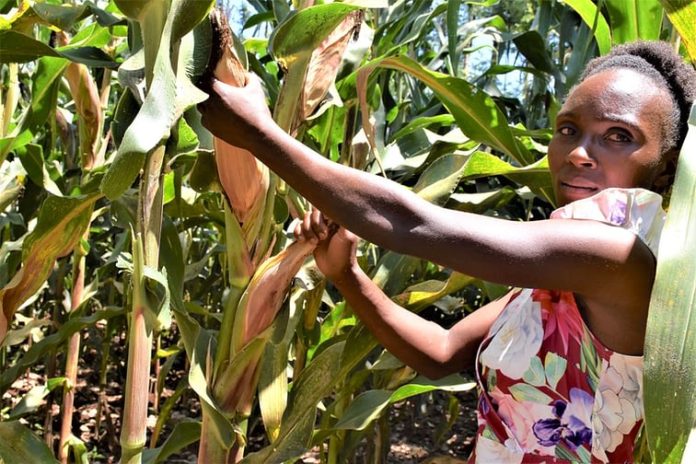As partners come together as One CGIAR to enact a bold climate-centered strategy, projects like CIMMYT and IITA’s decades-long work on climate-smart maize can help show the way forward.
Since the 1980s, the International Maize and Wheat Improvement Center (CIMMYT) and the International Institute of Tropical Agriculture (IITA) have spearheaded the development and deployment of climate-smart maize in Africa.
This game-changing work has generated massive impacts for smallholder farmers, maize consumers, and seed markets in the region. It also offers a blueprint for CGIAR’s new 2030 Research and Innovation Strategy, which proposes a systems transformation approach for food, land and water systems that puts climate change at the center of its mission.
Over the course of the 10-year run of the first iteration of this collaborative work on climate-adaptive maize, the Drought Tolerant Maize for Africa (DTMA) project, CIMMYT and IITA partnered with dozens of national, regional, and private sector partners throughout sub-Saharan Africa to release around 160 affordable maize varieties. This month, CGIAR recognizes climate-smart maize as one of the standout 50 innovations to have emerged from the institution’s first half-century of work.
Game changer
Maize’s importance as a food crop in sub-Saharan Africa is hard to overstate. So are the climate change-driven challenges it faces. It accounts for almost one third of the region’s caloric intake. It is grown on over 38 million hectares, primarily under rainfed conditions. Around 40% of this area faces occasional drought stress. Another 25% suffers frequent drought and crop losses reaching 50%.
Drought-tolerant maize stabilized production under drought-stress conditions. Recent studies show that farmers growing drought-tolerant maize varieties in dry years produced over a half ton more maize per hectare than those growing conventional varieties — enough maize to support a family of six for nine months.
Such drastic results fed increased demand for improved, climate-adaptive maize seed in sub-Saharan Africa, thus strengthening local commercial seed markets and helping drought-tolerant maize varieties reach an increasing share of climate-vulnerable farmers.
Today, approximately 8.6 million farmers have benefitted from CIMMYT- and IITA-derived climate-adaptive maize varieties in sub-Saharan Africa. Millions have risen above the poverty line.
In addition to drought-tolerance, CIMMYT- and IITA-derived climate-adaptive maize varieties have been developed to tolerate multiple climate-driven stresses and to provide improved nutritional outcomes through biofortification with essential nutrients such as provitamin A and zinc.
The task ahead
In his recently published book, How to Avoid a Climate Catastrophe, Bill Gates says “no other organization has done more than CGIAR to ensure that families — especially the poorest — have nutritious food to eat. And no other organization is in a better position to create the innovations that will help poor farmers adapt to climate change in the years ahead.”
CGIAR’s new strategic orientation is an important step towards making good on that potential. CIMMYT and IITA’s longstanding work on climate-smart maize offers an important blueprint for the kinds of bold, comprehensive, and collaborative research for development initiatives such a strategy could empower.
As CIMMYT and IITA directors general Martin Kropff and Nteranya Sanginga note in a recent op-ed, “The global battle against climate change and all its interconnected impacts requires a multisectoral approach to formulate comprehensive responses.”
Ends
































































